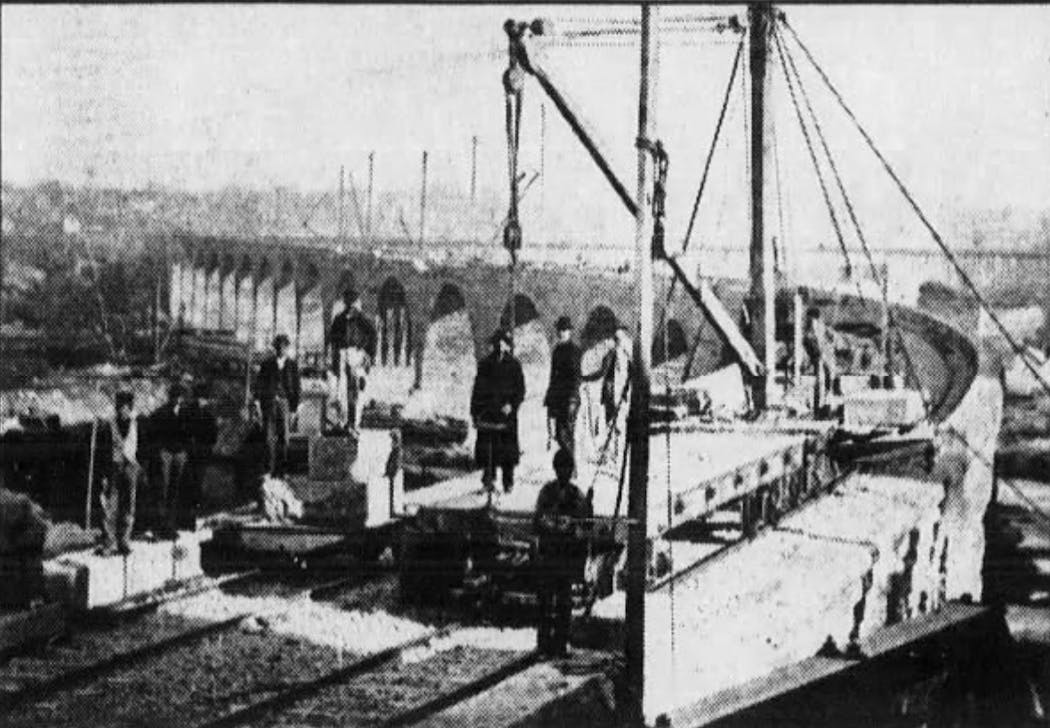A cloudless sky and shirtsleeve temps — the perfect combination Sunday for one last stroll across the Stone Arch Bridge before the Minneapolis landmark partly closes for the next two years.
Half of the historic bridge will be closed for renovations at 5 a.m. Monday, preventing pedestrians and cyclists from crossing until 2026.
"I'm really bummed, honestly," said Ilaaf Husain, who said the Mississippi River bridge became one of her favorite places to visit when she first moved to the Twin Cities.
On Sunday afternoon, she sat on its stone wall with friends, enjoying the warmth. Husain said that when she heard the bridge was closing, she and a few friends decided to come and make a day of it.
They were among the many who came all day long and well into Sunday evening to bid goodbye, for now.
A boy gripped the bridge's red rail and peered at the mill ruins on the west bank of the river; the music of a man playing an accordion wafted on the breeze, and people walked their dogs. A terrier passed by, pulling a wagon.
The Minnesota Department of Transportation (MnDOT) plans to close half the bridge at a time for $38.5 million in repairs, including repointing mortar and replacing and repairing damaged stone. During the work, pedestrians and cyclists will be able to cross halfway before turning around.
The St. Anthony Main side is closing Monday. Next spring, that side will reopen, and the downtown side will be closed. The entire bridge is expected to open in spring 2026.
'Hill's Folly' turned landmark
When the Stone Arch Bridge was built in the 1880s, it bore only the second railroad crossing on the Mississippi River.
Its visionary was rail baron James J. Hill, who needed a crossing in order to span the continent. He hired an engineer to design the curved structure, which then had 23 arches, according to MnDOT. Labeled "Hill's Folly" by critics, the bridge cost the rough equivalent of $16.5 million today.
"An engineering wonder when it was completed in 1883, the 2,100-foot structure was the pride of empire builder James J. Hill," the Minneapolis Tribune wrote in 1960. The story went on to say Hill was heavily involved in the bridge's planning and had called the project "the hardest undertaking I ever had to face."
The last passenger train crossed the Stone Arch in 1978; the line was abandoned a decade later. Now under MnDOT ownership, it was adapted for pedestrian use in the 1990s.
Among the bridge's most devoted users are runners.
"From a runner's perspective, it's the most accessible and pedestrian-friendly (at trail grade, no stairs/ramps or cars) river crossing along the downtown riverfront," runner Todd Bursch wrote in an email to the Star Tribune.
Bursch is affiliated with Run Beer Repeat, a group of craft beer aficionado runners who organized a run Thursday night to bid farewell to the Stone Arch for awhile.
The bridge's popularity with runners is clear on a heat map of running routes from Strava, a common run-tracking app, Bursch said. The map shows the Stone Arch at the center of well-worn routes along the river and its bridges.
But the bridge is more than that, Bursch said.
"To me, the Stone Arch Bridge is quintessential Minneapolis and the people drawn to it aptly represent the diversity of the city," he said. "A prime example being the ever-changing groups of people photographing and celebrating their culturally significant events."
Lauren and Alex Larson said the bridge has been a part of their lives since their student days at the University of Minnesota. Now living in Roseville, they visited Sunday with their four-year-old golden retriever, Maverick.
"We wanted to be here on such a nice day and enjoy it while we still can before it closed down for a couple years," Lauren said.
During the closure, suggested detours for pedestrians and cyclists, including across the recently reopened Third Avenue Bridge, can be found MnDOT's site.
Carolyn Parnell, 'trailblazer' who served as Minnesota's first IT commissioner, dies





